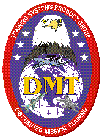
 |
| Winning against entrenched competition |
Our first challenge was to
develop relationships with the integrators and help the partner
win their proposal. After surveying the competitive landscape we
decided to focus our efforts on Lockheed Martin. We faced a number
of competitive threats in our quest to win this bid. The lead competitor
on the Lockheed Martin team was an internal Lockheed Martin Division
that had experience delivering visual systems for F-16 simulators.
|
The second competitor was Evans & Sullivan. E&S is recognized as the leading visual systems supplier and had recently been awarded a major contract with the US Air Force. MultiGen had no prior experience delivering visual systems. A major challenge was to convince Lockheed Martin that we should receive an invitation to play in this game. The next challenge was to provide a roadmap that could prove capabilities. Our competitors could point to installations as proof of their abilities. Another barrier, the Air Force RFP was influenced by E&S.
Critical Issues: The
US Air Force was looking to "train as they fight". The decision
markers (a committee of Pilots and Generals) were focused on solutions
that provided eye-limiting resolution. In other words, what
the pilot viewed in the simulation would give a feel that they were
in a plane. The US Air Force was frustrated that previous
visual systems could not keep pace with the changes in technology.
The existing systems came from proprietary technology (delivered
by E&S and Lockheed Martin).
|
Result: The US Air Force issued a final RFQ that required the use of open systems as part of the bid. Our competitors were now at our level. None of them had delivered a visual system based on open standards. In fact, the costs to change from a proprietary system to an open system created additional overhead for the competitors. Two years prior to the RFQ, MultiGen was responsible for leading an industry effort for an open file format used in defense, aerospace and gaming for visual system development. We teamed with Silicon Graphics to establish our credibility. Lockheed Martin selected us as the visual system supplier. As a result of this selection, MultiGen purchased a visual system supplier Paradigm to help with the delivery process. The US Air Force selected the Lockheed Martin team including the MultiGen visual solution. This project selection was a multi-hundred million dollar award for the visual system. |
 Situation:
In January of 1998,
MultiGen, Inc. was a small product oriented company needing to find
and develop new sources of revenue. The US Air Force Distributed
Mission Team had just released a RFP (Request For Proposal) to major
integrators for the development of F-16 flight training simulators
including various Mission Training Capabilities (MTC). This system
will be the Air Force's first Air-to-Ground simulation system including
a synthetic environment with full field-of-view 360 degree visuals.
The major system integrators bidding for the project included Lockheed
Martin, Boeing, and Raytheon. Each of these integrators immediately
began looking for a partner to develop a visual system for the US
Air Force RFQ.
Situation:
In January of 1998,
MultiGen, Inc. was a small product oriented company needing to find
and develop new sources of revenue. The US Air Force Distributed
Mission Team had just released a RFP (Request For Proposal) to major
integrators for the development of F-16 flight training simulators
including various Mission Training Capabilities (MTC). This system
will be the Air Force's first Air-to-Ground simulation system including
a synthetic environment with full field-of-view 360 degree visuals.
The major system integrators bidding for the project included Lockheed
Martin, Boeing, and Raytheon. Each of these integrators immediately
began looking for a partner to develop a visual system for the US
Air Force RFQ.